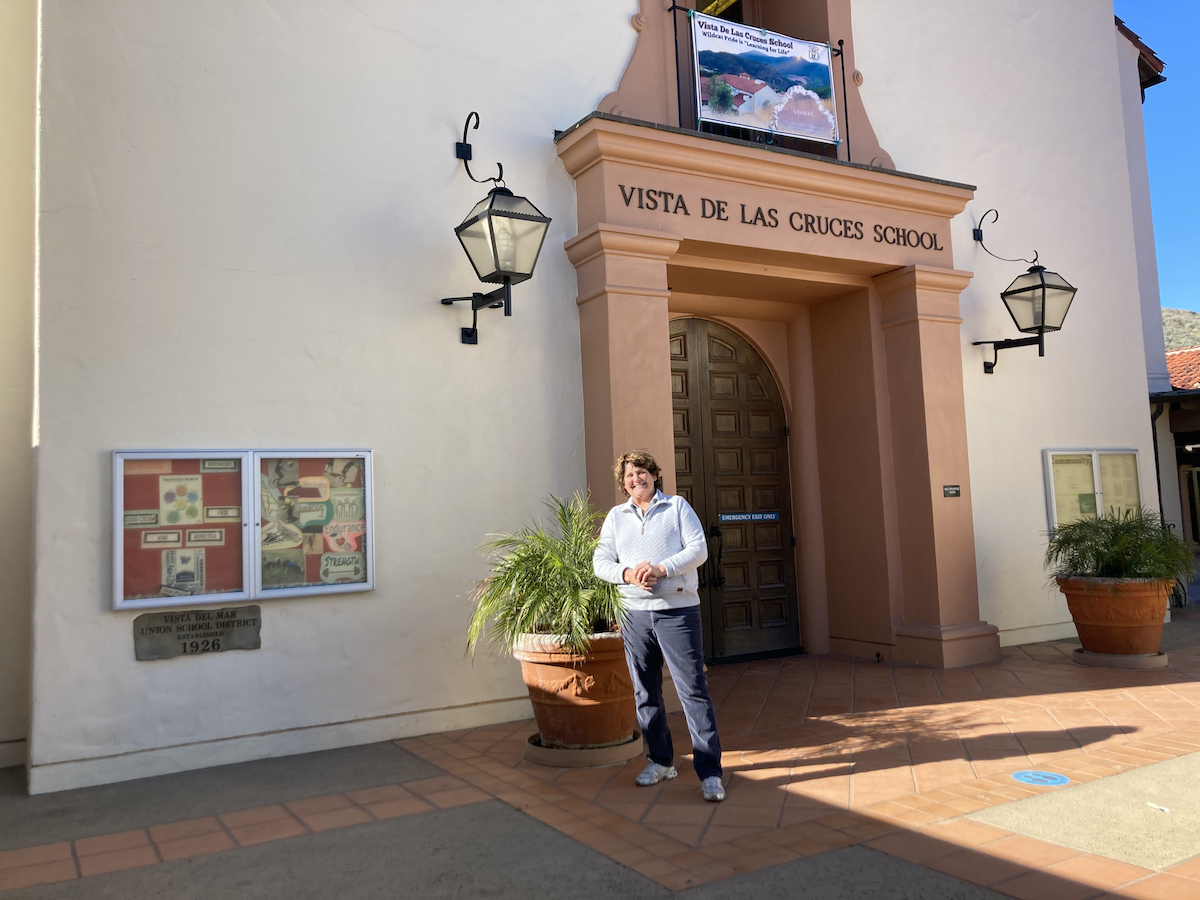Vista de las Cruces: The Little School That Could
Despite Major Obstacles, Campus Is Alive and Well

“People still have the erroneous idea that our little school has shut down,” Principal-Superintendent Lois Peterson told me. “I am happy to inform them we’re alive and well!”
It’s true there were some twists and turns, but Vista de las Cruces has launched a new chapter in its colorful story. It is the single school in the Vista del Mar Union School District that was formed in 1926 to consolidate three one-room schools that had been serving the local farm and ranch children.
The original Vista del Mar campus was located near the northbound 101 on a four-acre ocean-view parcel and served the kids from El Capitán to Las Cruces for decades. (A few folks who attended in the early 1960s still recall taking flights of fantasy on board a decommissioned F-86 Air Force fighter jet that was set up in the playground.) The building is visible from the highway today at Mariposa Reina and is home to the Channel Islands Marine & Wildlife Institute.
During the school’s 60 years of operation, the oil industry continued to grow and thrive along the Gaviota Coast, expanding its processing plant until, by 1986, realistic concerns about the health and safety of the children forced its closure, and Chevron built a temporary modular school a mile down the coast. After six years of negotiations, the state Department of Parks and Recreation agreed to sell 16 acres of Gaviota State Park near the old Las Cruces adobe at the junction of Highway 1 and the 101, and the beautiful new school, christened Vista de las Cruces, opened there in 1992, built and paid for (to the tune of $20 million) by Chevron. It’s a jewel of a facility, and the only public community center in an area extending from El Capitán to Lompoc.
Oil was both gift and curse, as oil tends to be, and Vista had to dramatically recalibrate finances when Plains All American Pipeline’s Line 901, transporting Exxon crude oil, ruptured in 2015, resulting in ecological catastrophe, loss of property tax, and the end of oil as a revenue source. There followed discussion about merging with the Buellton school district, but a groundswell of support from the community, tighter fiscal management, and astute professional expertise made it clear that not only was the school viable, but it would do far better if it remained independent.
What is it about Vista de las Cruces that makes it so special? It is rural in nature but wonderfully diverse, set among oaks and mountains, where the great outdoors become a part of the classroom. Two-thirds of the students are from Spanish-speaking families, most come to campus from ranches and farms, and many have a history here going back multiple generations.
Like a family, Vista has an awareness of its own heritage across generations, and Vista alumni speak of their school with an unusual degree of fondness. They describe a place where older students help younger ones, where language and cultural barriers are bridged through work and play. They remember walks to the wind caves, learning the names of native plants and their ancient uses, and interviewing neighbors on nearby ranches for an oral history project. There were adaptations of Shakespearean plays on the stage of the Ted Martinez Auditorium, Thanksgiving dinners for community elders, Las Posadas celebrations, and poetry contests.
Sign up for Indy Today to receive fresh news from Independent.com, in your inbox, every morning.
Dr. Peterson immediately grasped the charms and challenges of Vista when she arrived. Born and raised in a small Iowa farming community in a family of 15 children, she earned a doctorate in educational leadership and has won awards and recognition throughout her 40-year career. She garnered support and enthusiasm to address overdue maintenance issues (including water system repair and solar connectivity), clean up grounds and classroom, and launch innovative ideas. Students, staff, and community members worked hard.
With its exterior spaces, large classrooms, and small class sizes, Vista has been an ideal school during the pandemic. In addition to the wonders of nature right outside, the campus has an indoor gym/theater, art studio, and science labs. There are currently 28 students in transitional kindergarten through 6th grade, and there are plans to add 7th and 8th grades next year. The school is offering a free after-school theater and arts program and has a music program and farm-gardening program in the works too. The campus is located 12 minutes from Buellton and Lompoc, and open enrollment is available for neighboring communities through an application process.
“This is an amazing, surprising school, with a beautiful legacy,” says Dr. Peterson. “We’re going to turn obstacles into opportunities.”
Support the Santa Barbara Independent through a long-term or a single contribution.



